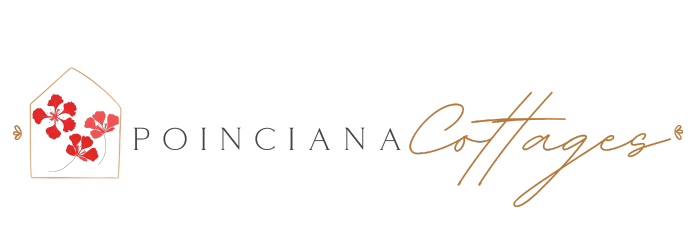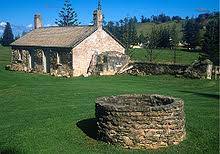In part two of this segment where we focus on the Norfolk Island Experience, we take a look at what you can expect from a historical and cultural point of view.
It won’t take you long to discover Norfolk Island’s fascinating past, and how our history and culture are intricately entwined. Traditions and everyday lives are influenced greatly by our heritage, from our foods to our music and folklore.
Festivals and events are held each year to honour these cultural practices. Our history is unique in many ways. Discover our first Polynesian settlers through our museums and the Kingston UNESCO World Heritage Site, the British convicts that followed, and the descendants of the Bounty mutineers who shaped our culture.
Norfolk Island’s convict history
Norfolk Island became a British penal colony in 1788, which operated until 1855. For the convicts serving life sentences in this place known as Hell in the Pacific, the paradise we see today was a place of nightmares.
During your stay at Poinciana Cottages, you can see where convicts and Pitcairn settlers once lived in buildings, some now in ruins, once located on the 250-acre Kingston World Heritage Site. Make sure to take a stroll through our cemetery, a veritable library of tombstones that tell the stories of convicts and those who followed them.
Norfolk Island’s Pitcairn culture
Even though Captain Cook was the first European to arrive on Norfolk Island in 1774, many on the island today are descended from one of the greatest adventures on the high seas: the Mutiny on the Bounty. Queen Victoria, whose memory we honour today in the Queen Victoria Memorial Gardens, granted Norfolk Island and the old prisoner’s settlement to descendants of the Bounty mutineers after they outgrew Pitcairn Island in 1856.
It is impossible to visit Pitcairn without visiting the Bounty Folk Museum and Fletcher’s Mutiny Cyclorama, a 360° panoramic painting illustrating our ancestors’ story in a multisensory way.
Now, onto our top 5 historical or cultural points of interest on Norfolk Island:
- The All Saints Church
Norfolk Island’s 180-year-old building was once a military store during the island’s penal days. Now a museum and Anglican church, it serves both functions.
Visit the Commissariat Store on the lower level for a history fix. The Norfolk Island Museum is home to artifacts recovered from the Kingston UNESCO World Heritage Site.
These artefacts range from the practical (think Polynesian tools) to the downright grisly (leg irons and whips that were used to keep convicts in line).
Above the Commissariat is All Saints Church, which was converted following the resettlement of Bounty mutineers from Pitcairn Island in the mid-19th century.
If you are visiting, please ask the friendly staff at the Visitor Information Center about the current service days, times, and locations.
- Fletcher’s Mutiny Cyclorama
Norfolk Island’s history can be observed as it unfolds through Fletcher’s Mutiny Cyclorama without whipping out a time machine. Marie Bailey, a descendant of Fletcher Christian, had the idea to create a cyclorama to explain this part of our history.
This 360° painting, measuring 3.6 metres in height and 50 metres in circumference, puts you in the centre of the story as it depicts the voyage and mutiny on the Bounty and the settlement of the island.
With music, sound, props, and 3D illusions enhancing the effect, it’s easy to imagine yourself amid the action from a comfortable vantage point within the panoramic masterpiece.
In the soundtrack of the cyclorama, you’ll hear snippets of Norf’k, a language still spoken by islanders today.
- The New Military Barracks
1835 marked the start of construction on the New Military Barracks, just a year after the Old Military Barracks was completed. Why was there such urgency? Norfolk Island was swarmed with soldiers by colonial powers, who feared a convict uprising. These soldiers were in dire need of accommodation.
It is one of many buildings in Kingston’s UNESCO World Heritage site that were constructed by convicts. I find it difficult to imagine the New Military Barracks as a place of turmoil, especially with its Georgian facade. Poor prisoners tasked with hard labour, however, faced a life that was anything but idyllic.
Currently, the New Military Barracks house the Administrator’s Office and Council Offices.
- The Arches
There is a mysterious ruin in Kingston UNESCO World Heritage Site that is made up of stone archways.
Norfolk Island hosted a cruel penal colony for twice-convicted prisoners in the 1840s, and the Arches date back to that time. However, their purpose is still up for debate today. The ruin’s imposing size and grand design have left historians puzzled as to its function. Some say it was a prisoners’ barracks. Others say it was a stable for horses.
Look at it for yourself and make up your mind. You can also go with a guide who can tell you more about the history of the site, which once housed an agricultural complex during the convict era, much of which has since vanished.
- The Settlement Guard House
Only a few structures remain from the first British settlement on Norfolk Island, including the Settlement Guard House. During the abandonment of the colony in 1814, most of the buildings were dismantled or set on fire to discourage new occupants.
A portion of the original structure of this building survived and was incorporated into the Settlement Guard House when it was built in 1826.
Take a moment to consider how the cottage has been used throughout Norfolk’s history: originally a guardhouse, it has been converted into a boatshed and has also been used to store liquor supplies.
With that all done and dusted (well not all, but some) we look forward to welcoming you to Norfolk Island and Poinciana Cottages this year!
Stay tuned for part 3 of The Norfolk Island Experience.

